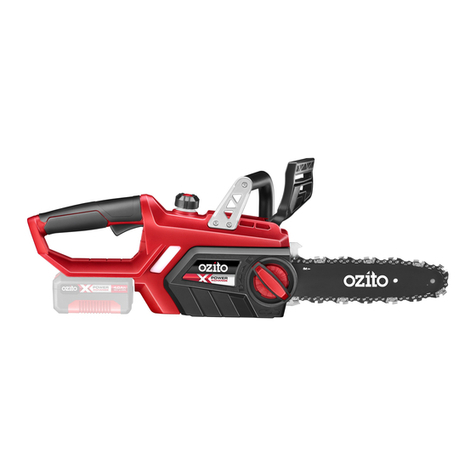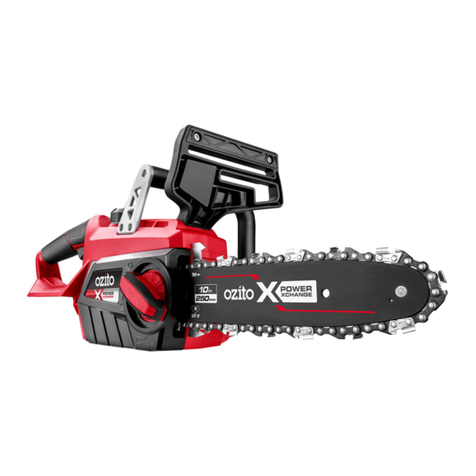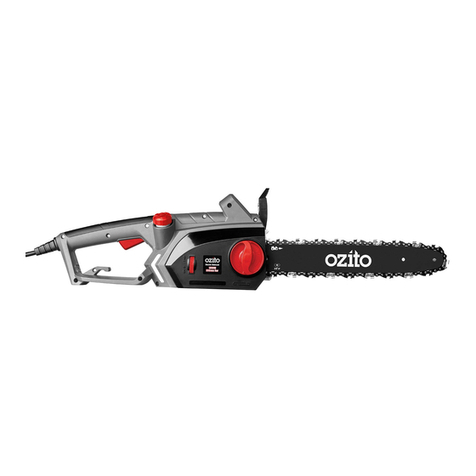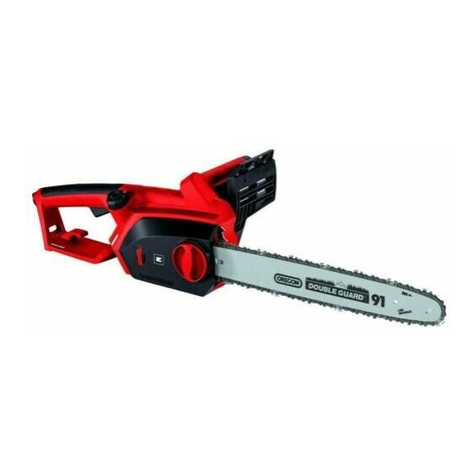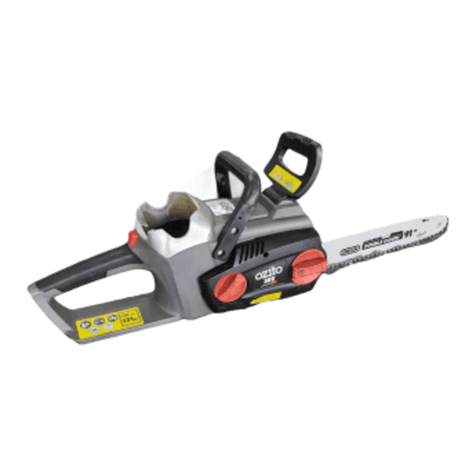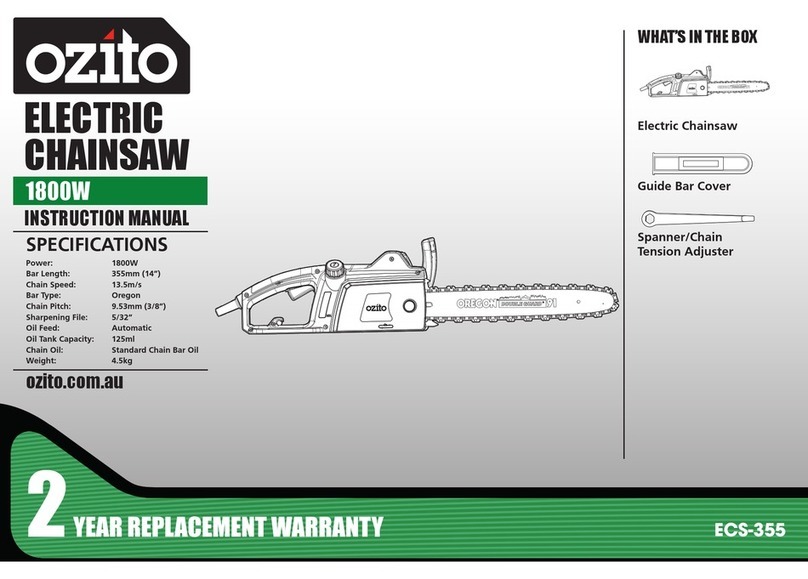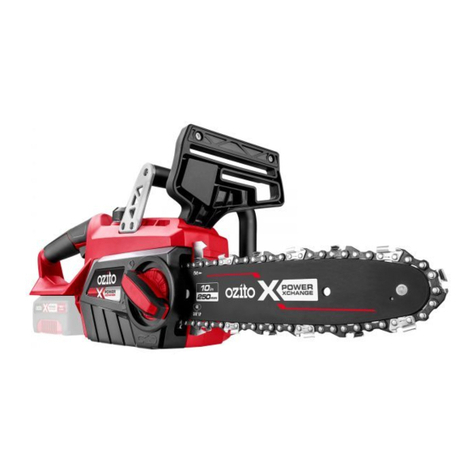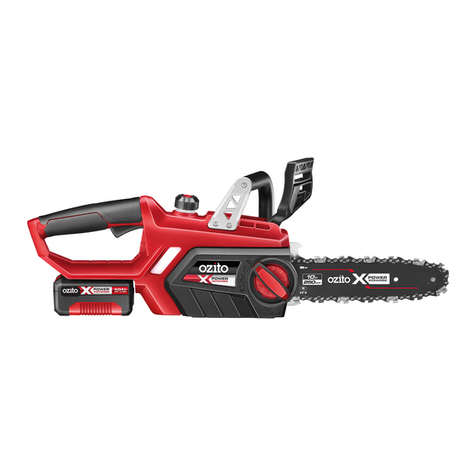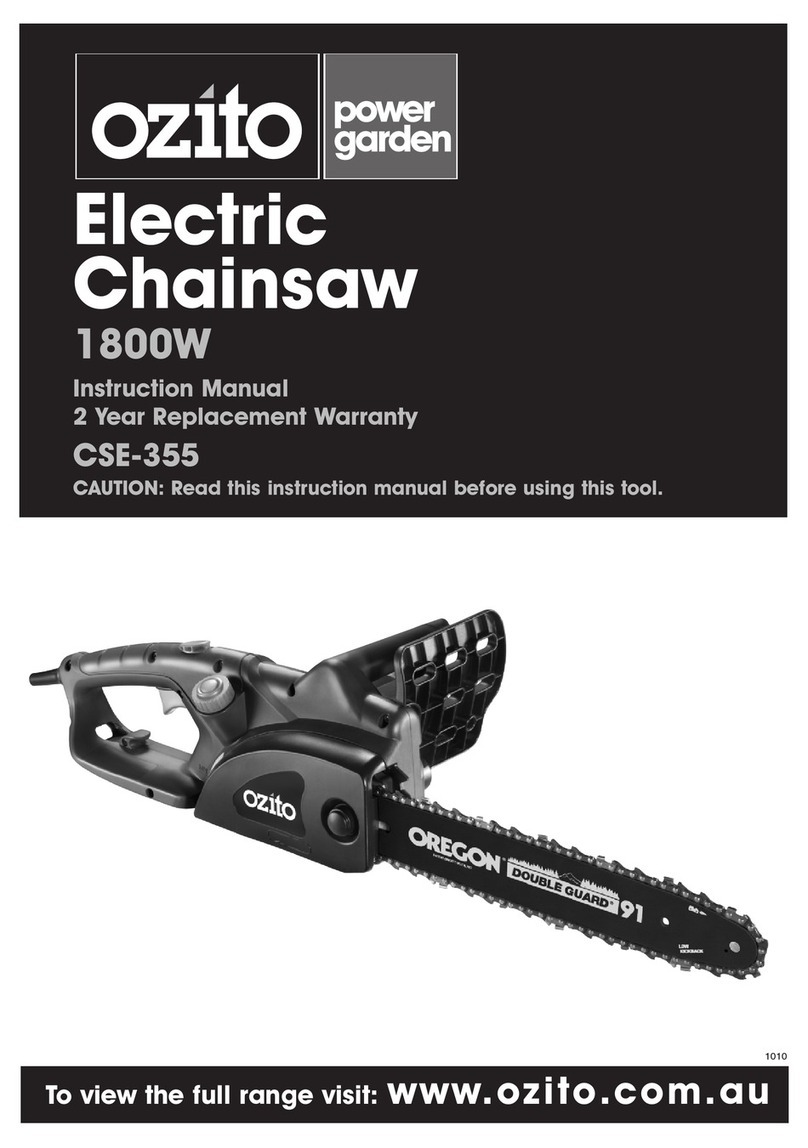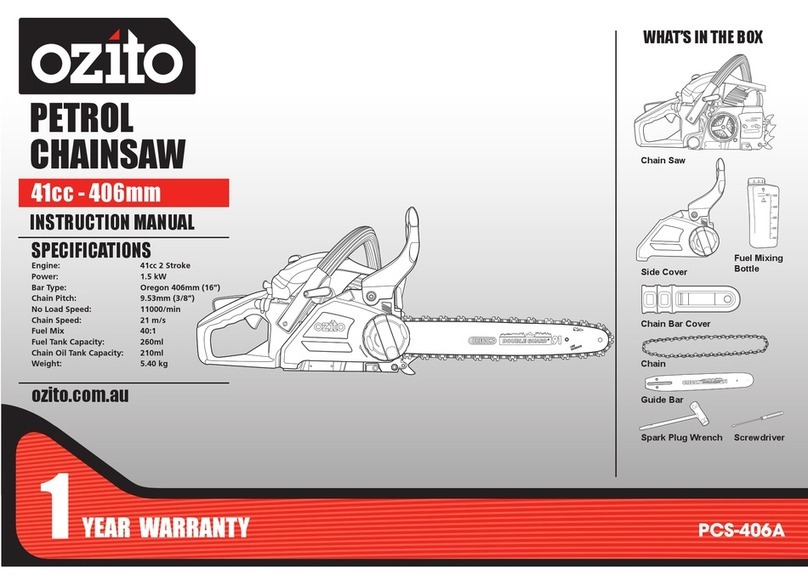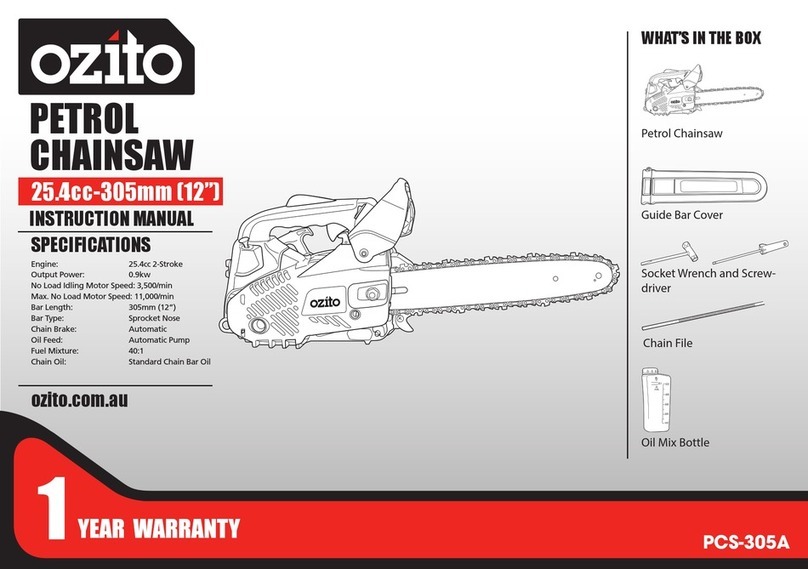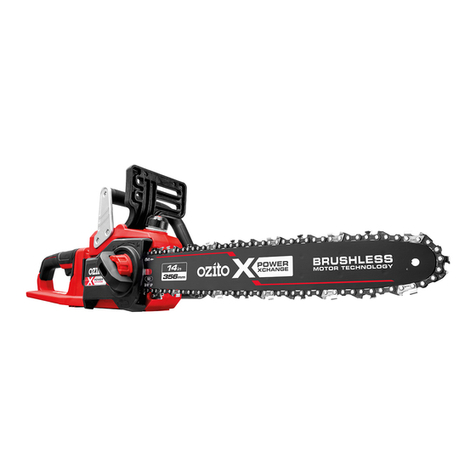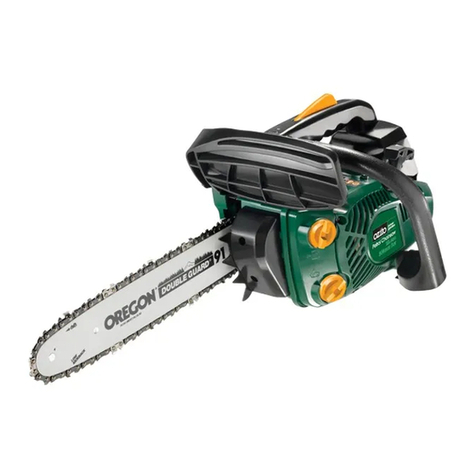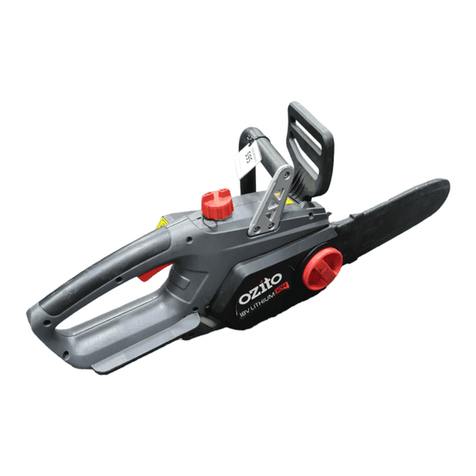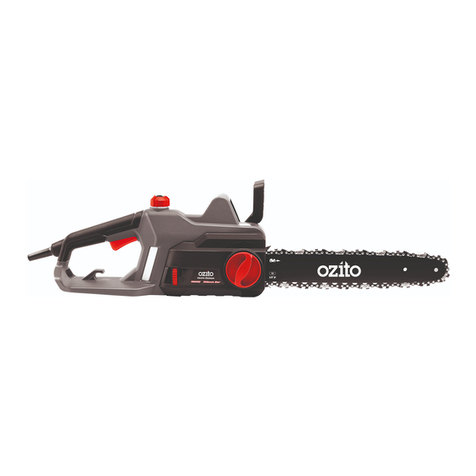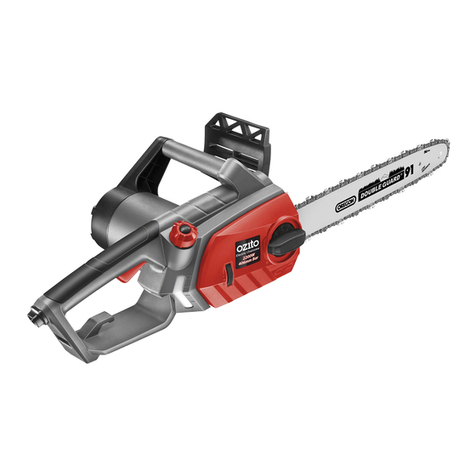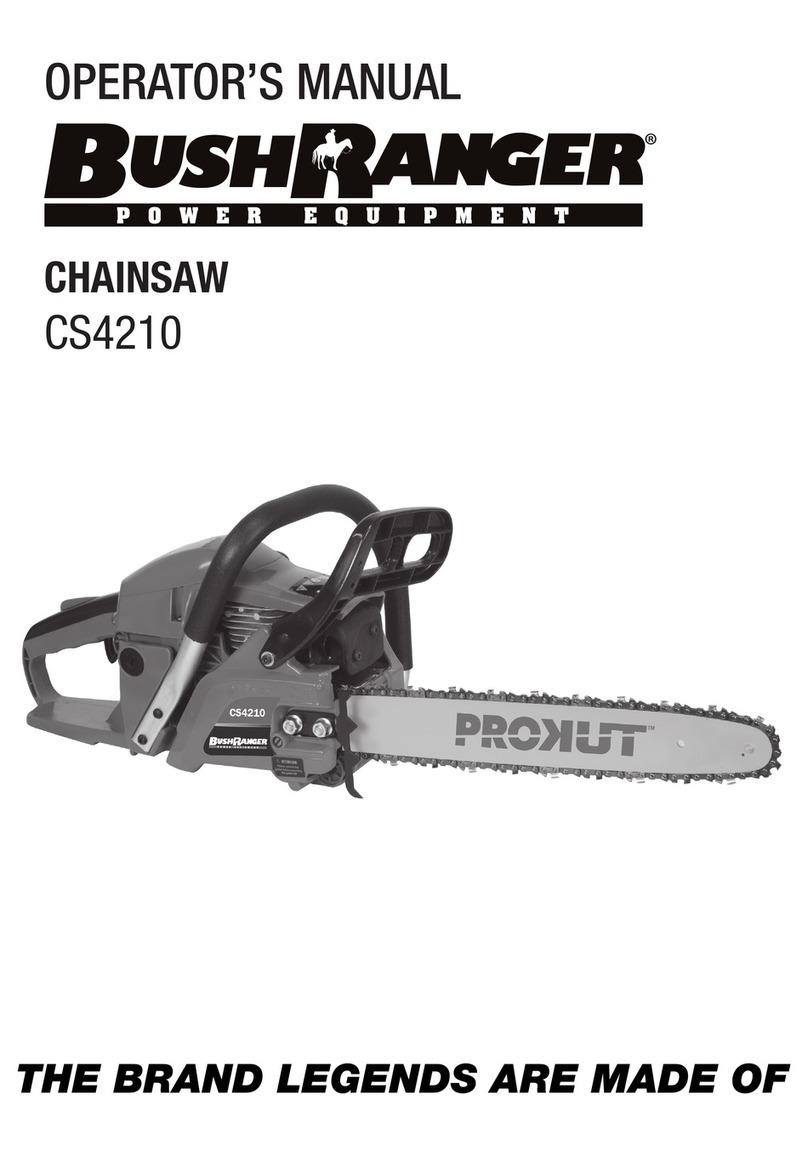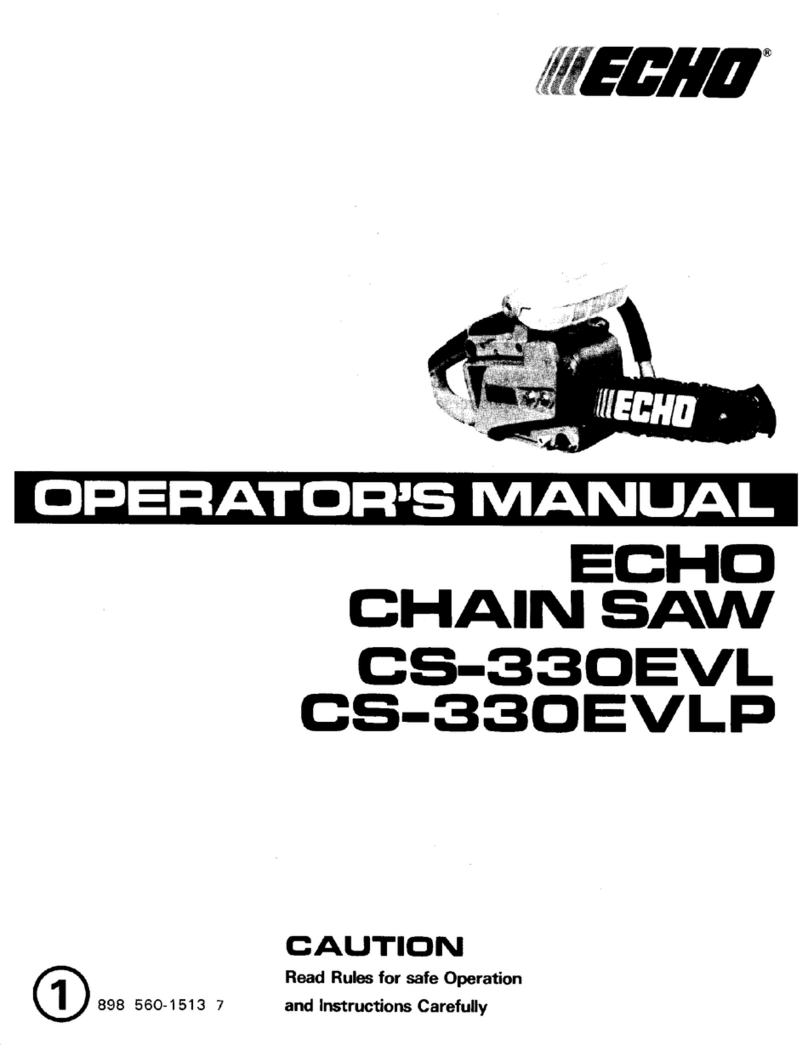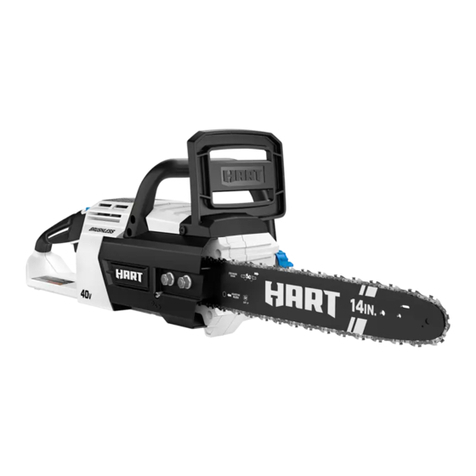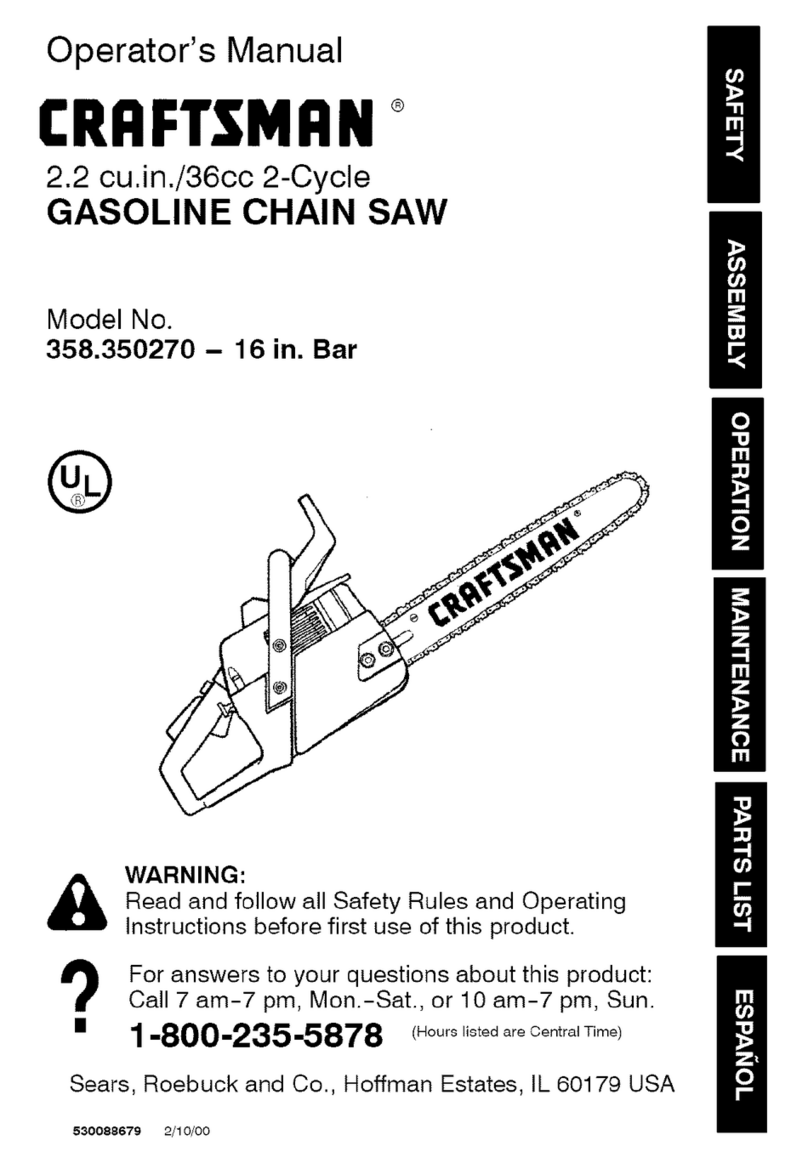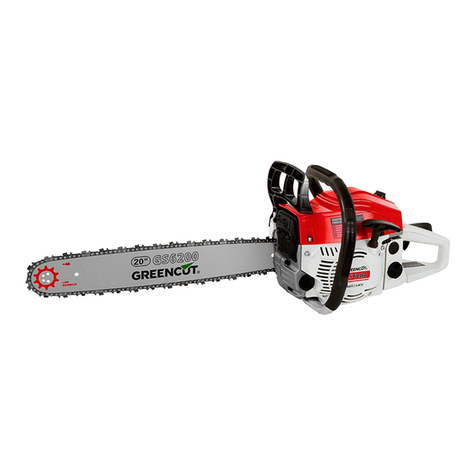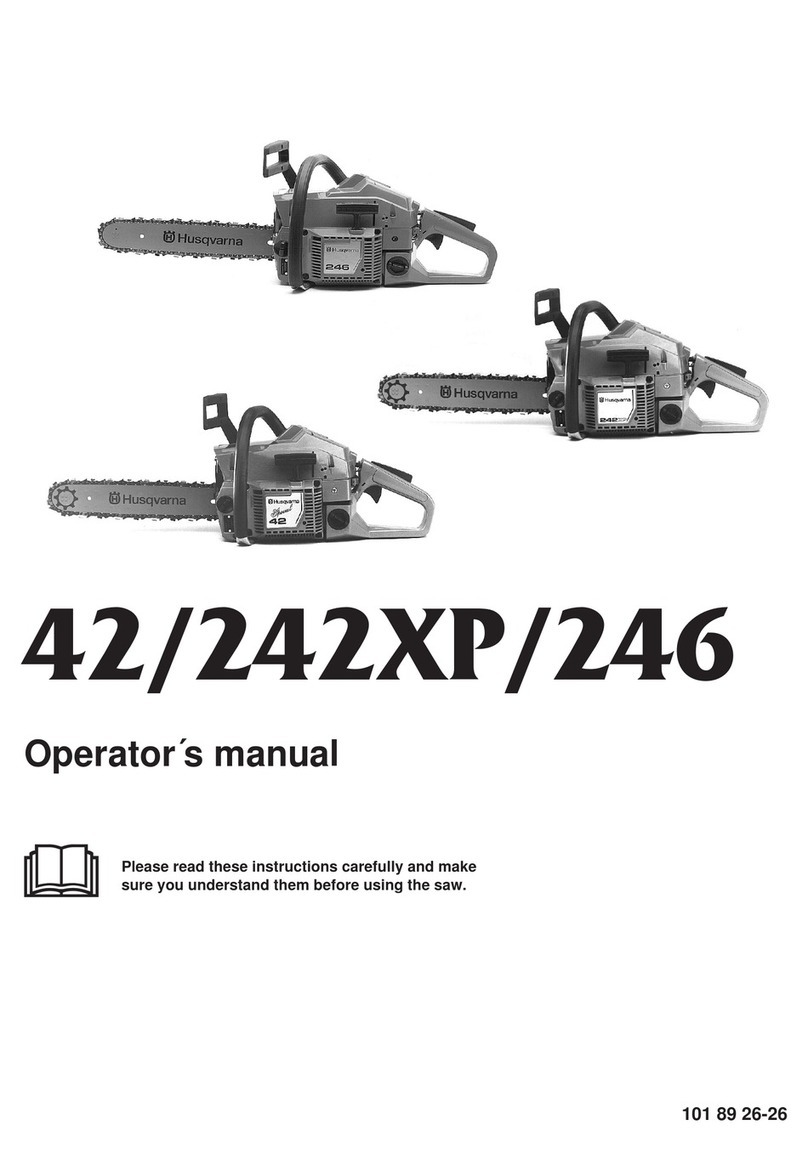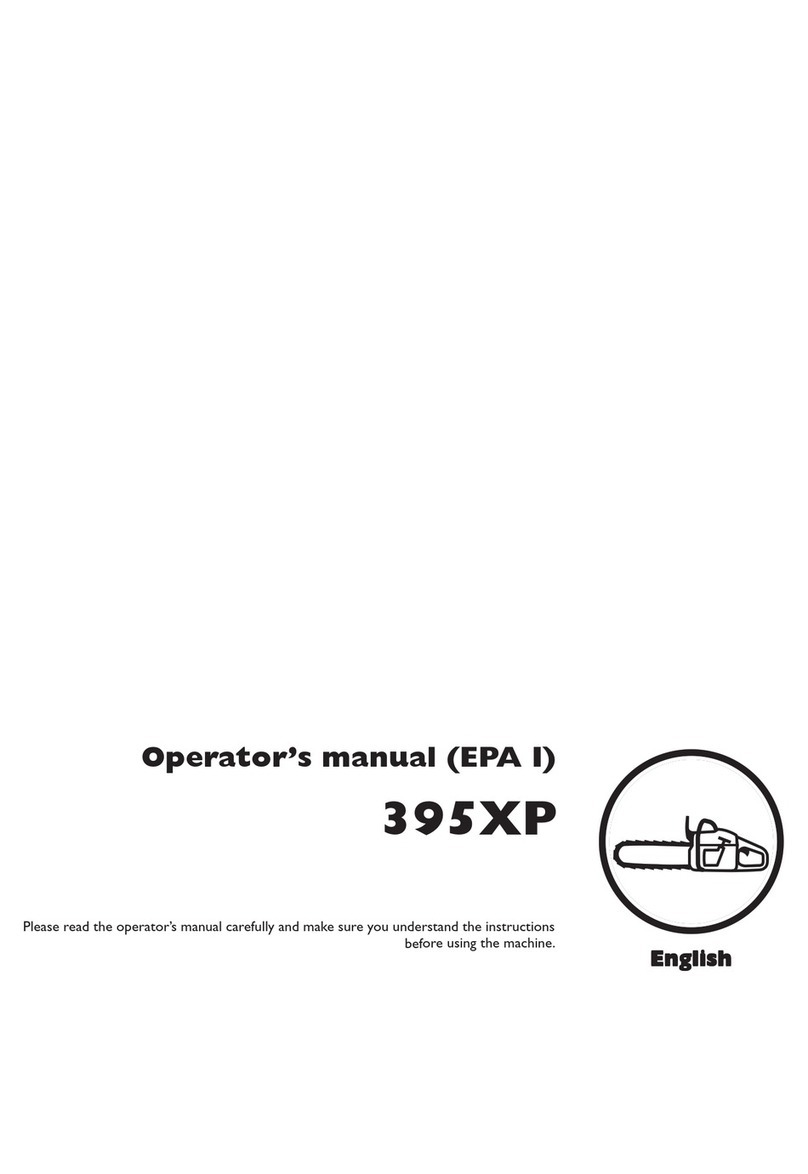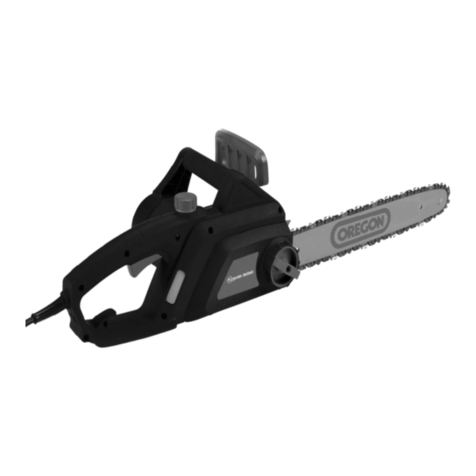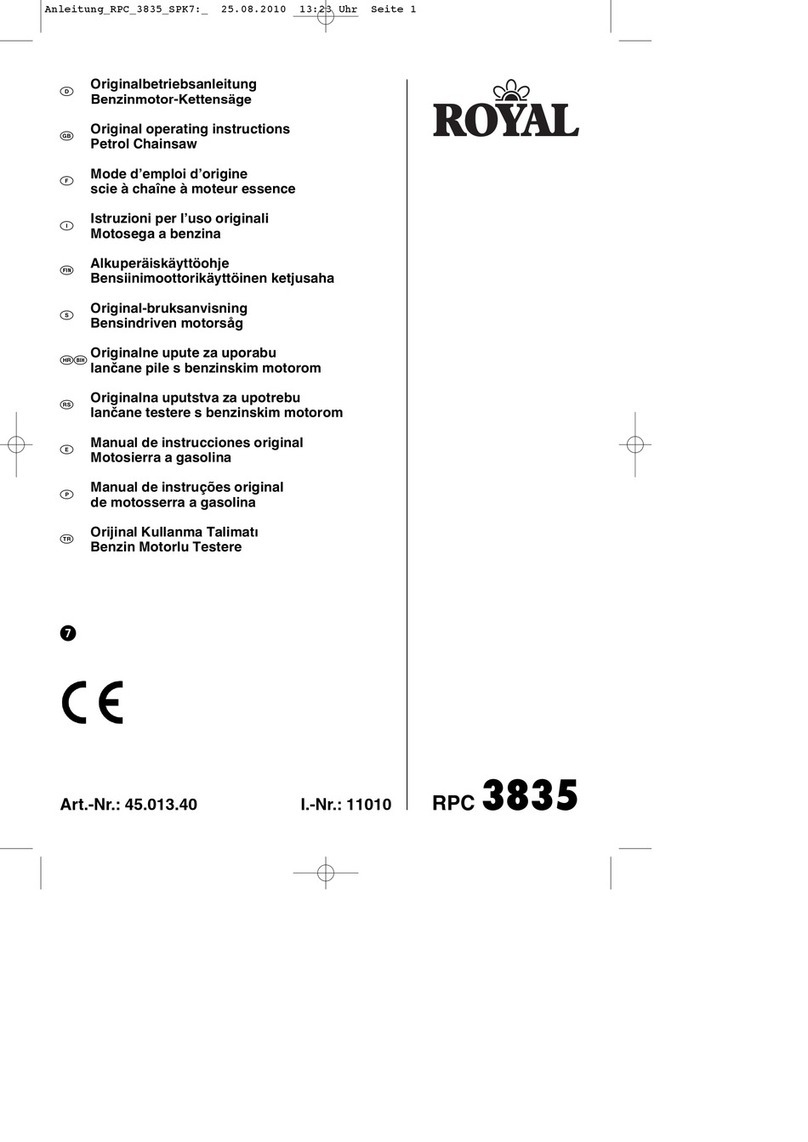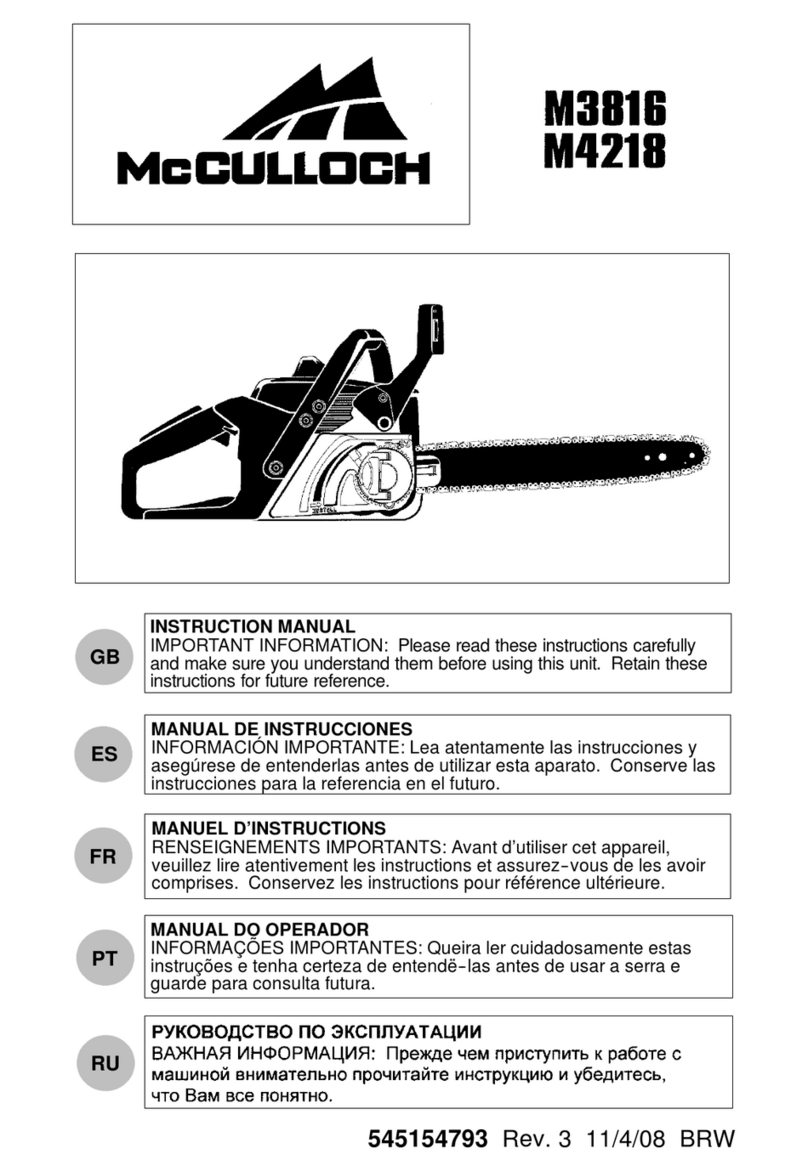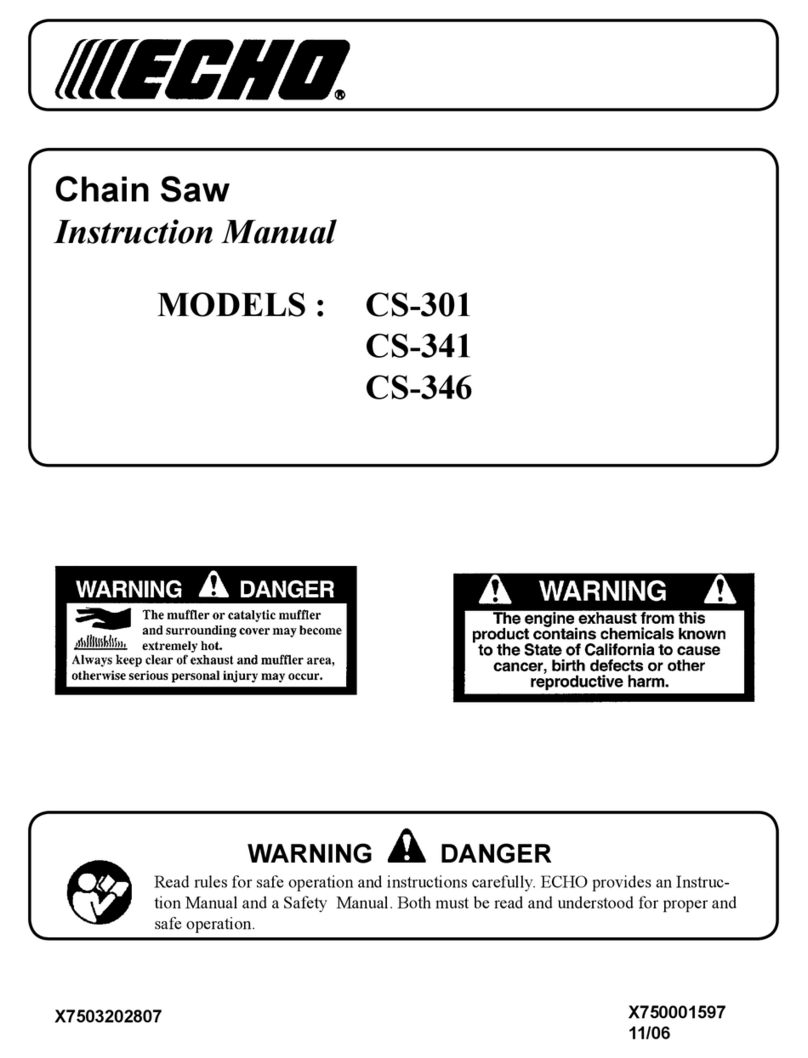
GB
- 10 -
4) Power tool use and care
a) Do not force the power tool. Use the cor-
rect power tool for your application. The
correct power tool will do the job better and
safer at the rate for which it was designed.
b) Do not use the power tool it the switch
does not turn it on and off. Any power tool
that cannot be controlled with the switch is
dangerous and must be repaired.
c) Disconnect the plug from the power sour-
ce and/or the battery pack from the pow-
er tool before making any adjustments,
changing accessories, or storing power
tools. Such preventive safety measures redu-
ce the risk of starting the power tool acciden-
tally.
d) Store idle power tools out of the reach of
children and do not allow persons unfa-
miliar with the power tool or these inst-
ructions to operate the power tool. Power
tools are dangerous in the hands of untrained
users.
e) Maintain power tools. Check for misalign-
ment or binding of moving parts, breaka-
ge of parts and any other conditions that
may affect the power tool’s operation. If
damaged, have the power tool repaired
before use. Many accidents are caused by
poorly maintained power tools.
f) Keep cutting tools sharp and clean.
Properly maintained cutting tools with sharp
cutting edges are less likely to bind and are
easier to control.
g) Use the power tool, accessories and tool
bits etc. in accordance with these inst-
ructions, taking into account the working
conditions and the work to be performed.
Use of the power tool for operations different
from those intended could result in a hazar-
dous situation.
5) Battery tool use and care
a) Recharge only with the charger specified
by the manufacturer. A charger that is sui-
table for one type of battery pack may create
a risk of fire when used with another battery
pack.
b) Use power tools only with specifically
designated battery packs. Use of any other
battery packs may create a risk of injury and
fire.
c) When battery pack is not in use, keep it
away from other metal objects, like paper
clips, coins, keys, nails, screws or other
small metal objects, that can make a
connection from one terminal to another.
Shorting the battery terminals together may
cause burns of a fire.
d) Under abusive conditions, liquid may be
ejected from the battery; avoid contact.
If contact accidentally occurs, flush with
water. If liquid contacts eyes, additionally
seek medical help. Liquid ejected from the
battery may cause irritation or burns.
6) Service
a) Have your power tool serviced by a qua-
lified repair person using only identical
replacement parts. This will ensure that the
safety of the power tool is maintained.
Additional safety instructions
We pay a great deal of attention to the design of
every battery pack to ensure that we supply you
with batteries which feature maximum power den-
sity, durability and safety. The battery cells have
a wide range of safety devices. Each individual
cell is initially formatted and its electrical charac-
teristic curves are recorded.These data are then
used exclusively to be able to assemble the best
possible battery packs. Despite all the safety
precautions, caution must always be exer-
cised when handling batteries. The following
points must be obeyed at all times to ensure
safe use.
Safe use can only be guaranteed if undama-
ged cells are used. Incorrect handling can
cause cell damage.
Important: Analyses confirm that incorrect use
and poor care are the main causes of the damage
caused by high performance batteries.
Information about the battery
1. The battery pack supplied with your cordless
tool is not charged.The battery pack has to
be charged before you use the tool for the first
time.
2. For optimum battery performance avoid low
discharge cycles. Charge the battery pack
frequently.
3. Store the battery pack in a cool place, ideally
at 15°C and charged to at least 40%.
4. Lithium-ion batteries are subject to a natural
ageing process.The battery pack must be
replaced at the latest when its capacity falls to
just 80% of its capacity when new.Weakened
cells in an aged battery pack are no longer
capable of meeting the high power require-
ments and therefore pose a safety risk.
Anl_PXCCSS_0182U_SPK7.indb 10Anl_PXCCSS_0182U_SPK7.indb 10 27.11.2019 14:48:1327.11.2019 14:48:13
